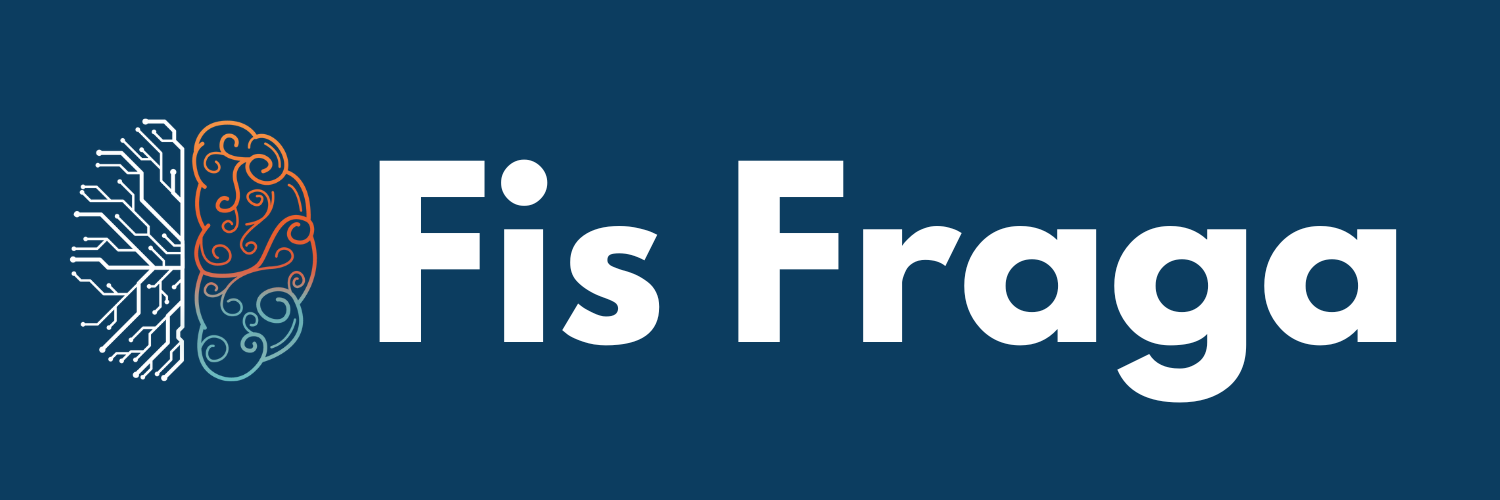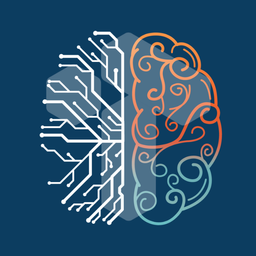no.15 - The Future of Knowledge Management. Why Tana is State-of-the-Art.
Understand how Tana deals with PKM in a powerful and fluid way.
Updated on 10/05/2024

Tana is an all-in-one workspace.
In Tana, you can create a system to manage pretty much anything.
Usually, apps are dedicated to executing a specific function very well, not a wide range of functions, which makes Tana an interesting phenomenon.
Let's explore and analyze Tana through a lens of Knowledge Management.
Let's understand why Tana is so flexible and, at the same time, so powerful.
Knowledge is the fuel of the modern economy.
Everything can be represented by knowledge.
Knowledge can represents anything and Knowledge Management can be used to manage anything.
And Tana is the perfect match, because it has a SUPER flexible data structure.
In the Knowledge Economy, a flexible tool to handle Knowledge is critical.
In my opinion, Tana is the best option to handle knowledge.
↓ Let's find out why with a couple of quotes. ↓
💬 4 Quotes
Quote 1 - Definitions
How about we start with a definition of Knowledge Management?
“The four major processes [of knowledge management] consist of the process of 1. creating the knowledge (including knowledge maintenance and updating), the process of 2. storing and retrieving the knowledge, the process of 3. transferring (sharing) the knowledge, and the process of 4. applying the knowledge.”
– Alavi and Leidner, 2001, survey with +16,500 citations
Let me reformat it so it’s easier for you to see:
- Creating (Maintaining and Updating)
- Storing and Retrieving
- Transferring
- Applying
These are the 4 pillars of knowledge management.
A brilliant tool has to handle these processes brilliantly.
Let’s take a look at some of these.
Quote 2 - Capture
“Knowledge capture is about mining the richness of the reading you’re already doing and the life you’re already living.” – Tiago Forte
The First Law of Thermodynamics states that Energy can neither be created nor destroyed — only converted from one form of energy to another.
Knowledge is a form of Energy.
Creating knowledge is actually converting knowledge.
You convert knowledge from outside your Second Brain to the inside of. your Second Brain.
Another name for this is capturing.
You convert (capture) knowledge from the outside, the life you’re already living, into the inside, a closed universe where your knowledge exists.
Tana Capture app is world-class at this.
You can start typing, speaking, taking photos, filming, and scanning.
The knowledge will be safely stored in your Tana workspace. (Ready to be processed with the power of AI)
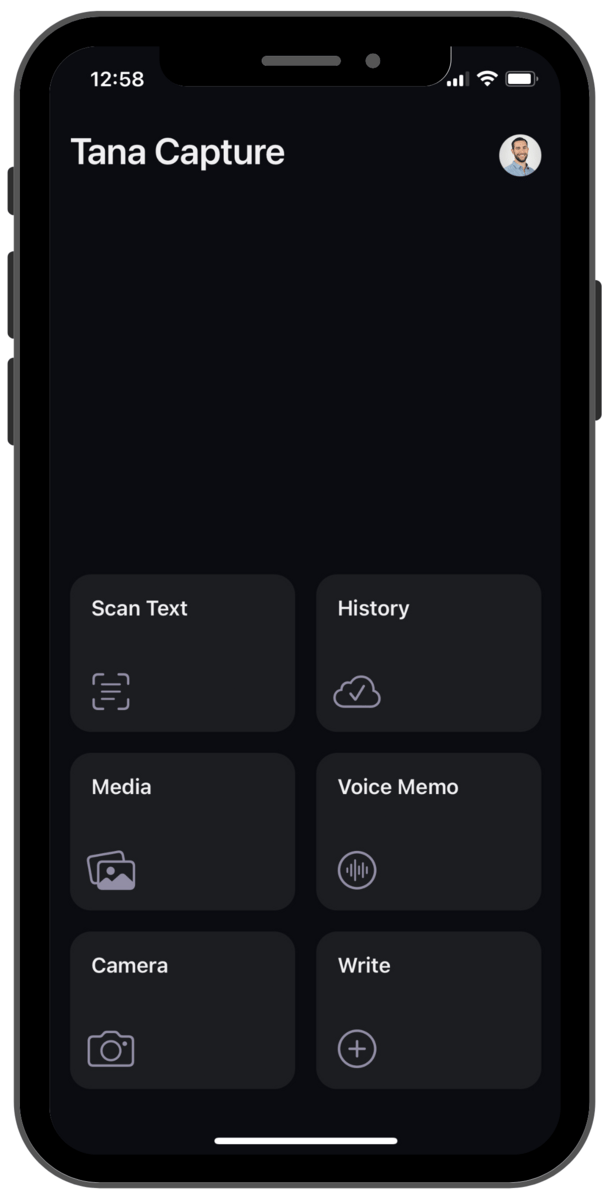
Quote 3 - Retrieval
“In reality, information that cannot be reliably retrieved is not really being stored.” – David Deutsch, Physicist
I love this quote. If you can’t retrieve something, it’s basically useless.
It represents the core concept of knowledge management.
- Retrieval
Tana is again world-class in retrieval.
I suffered a lot from this when I started using Roam Research. (Please note this is due in majority to my lack of experience. If I were to do it again, I would solve this problem in Roam. Tana just makes it much easier.)
Tana has a perfect combination of Supertags and Live Queries that make it extremely easy to find anything that you create (if you add a Supertag to it!)
For example, items that are captured with a Supertag can be found in the respective Live Queries.
Quotes will be found in the Quotes Live Query.
Threads will be found in the Threads Live Query.
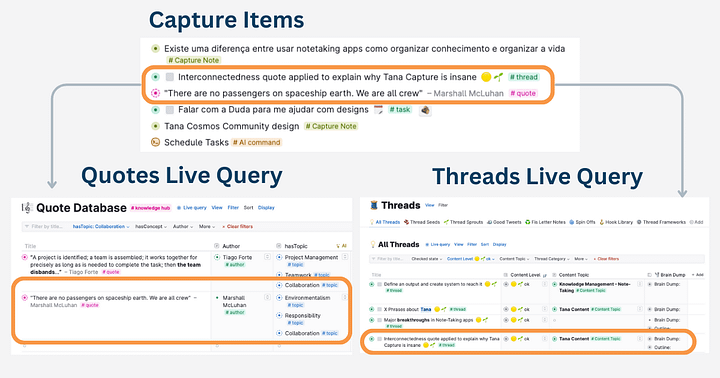
Quote 4 - Next Level Retrieval
“Intelligence is not the ability to store information, but to know where to find it.” – Albert Einstein
You can only transfer or apply knowledge by finding it.
This makes it a critical step in Knowledge Management.
And Einstein would be pleased to know that Tana's data structure takes us to modern-day intelligence, where we can take this a step further.
Modern-day intelligence is when information finds you. Exactly when and where you need it.
Modern-day intelligence is not limited to finding information… Yes, finding information is great.
But Information Finding You is AMAZING.
This is possible in Tana!
You can set up Live Queries inside the places where you will use that information, so that information finds you whenever you want to find it.
Inside a Project page, you can surface Project Notes from any location in your workspace, given they are linked to the project.
This allows you to always have knowledge close by.
So you can focus on what matters.
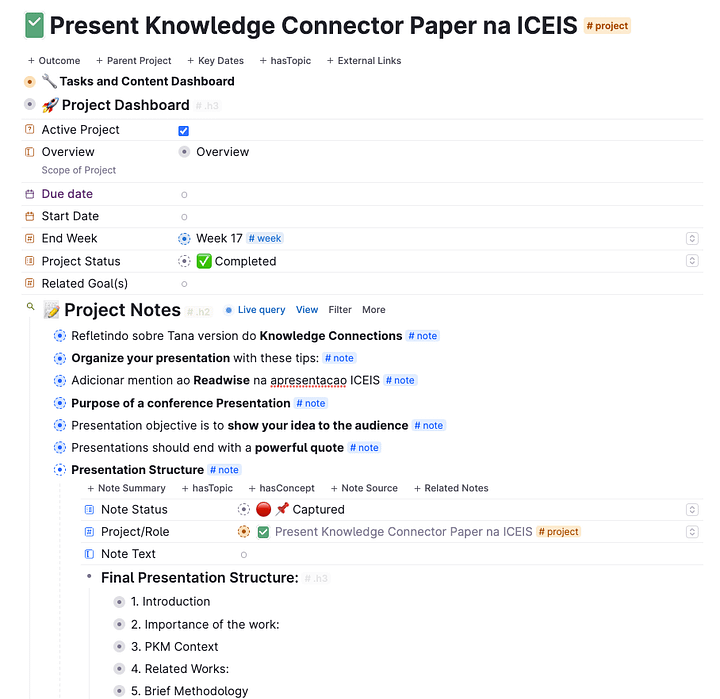
📄 3 Notes
1. Basic Knowledge Representations
Now let’s dive into how knowledge is represented.
Knowledge Management depends on Knowledge Representation.
Knowledge initially resides in one person’s mind and is restructured or resurfaced in another person’s mind.
Knowledge Representations are the different paths through which knowledge can be restructured.
According to Markman, 2013, there are 3 basic ways to represent knowledge:
- Spatial Models
- Feature Models
- Network Models
Spatial Models of representation are those which rely on the visual or spatial representation of information, where all of the encoded knowledge is visually accessible and within reach.
This makes Spatial Models effective for small amounts of knowledge, but not as suited for larger amounts of knowledge, since it depends solely on space to encode information, which is not enough for either large amounts of depth (detail) or breadth (reach).
Feature Models of representation use symbols to represent different types of information. Features act much like a sign in Semiotics theory.
They communicate a meaning that is not the sign (feature) itself, to an interpreter.
dFeatures may be visual, conceptual, and mathematical.
Network Models of representation use a graph structure of nodes and links to convey knowledge.
The critical aspects for representing networks are the structure of the networks (nodes and links) and the labels on the nodes and links.
A very important aspect of Network Models is Semantic Networks, which represent specific relations between concepts, as well as the propagation of relations.
These 3 models are fundamental to how Tana works.
Spatial representation is present in every tool that uses a screen. This is not a big deal.
What Tana does very well is to put BOTH Features and Networks as core to the product.
Features are best represented by fields, which are features belonging to each object (an object is an instance of a Supertag.)
And everything in Tana works inside a Network.
It’s actually funny because Tana creates the Network using fields (features). This is what allows Tana to have Semantic Networks, with specific relations that can propagate through the graph.
In Summary, Knowledge is very well represented in Tana.
2. Knowledge Visualization
For any representation of knowledge to be consumed and understood by a human, it must first be visualized.
There is a fascinating framework for Knowledge Visualization presented in Burkhard, 2005, which expands on this topic of visualizing knowledge.
Burkhard outlines a framework to categorize the transfer and creation of knowledge. (The framework may also be used for the other two processes of storage and retrieval, and application.)
The framework is based on four perspectives that can be considered when creating visual representations:
- Function
- Knowledge Type
- Recipient
- Visualization Type
The questions that guide these perspectives are:
- Why should knowledge be visualized? (aim)
- What type of knowledge needs to be visualized? (content)
- Who is being addressed? (recipient)
- Which is the best method to visualize this knowledge? (medium)
What I like the most about this framework are the functions that Burkhard suggests for why knowledge should be visualized.

These 6 options of Coordination, Attention, Recall, Motivation, Elaboration, and New Insight are very interesting to guide possible use cases of Knowledge Management.
This is not limited to Knowledge Visualization.
Knowledge Management is as much about visualizing as it is about managing.
Rating Tana from 1–10 in these functions:
- Coordination: 7
- Attention: 7
- Recall: 10
- Motivation: 8
- Elaboration: 9
- New Insight: 9
I won’t justify my ratings because this article is getting too long 😂.
3. Tana has Networks and Hierarchies
Finally, I wanted to finish up with the idea that even though Tana works as a Network, it can easily represent a Hierarchy!
Hierarchies are how folders work.
Tana can emulate folders even though this is not the original data structure in Tana, which is a Network by essence.
Hierarchies (Trees) are a subset of Networks (Graphs); the only thing that changes are some additional constraints.
This means Tana can easily represent a Hierarchy.
You just need to add those constraints. ↓
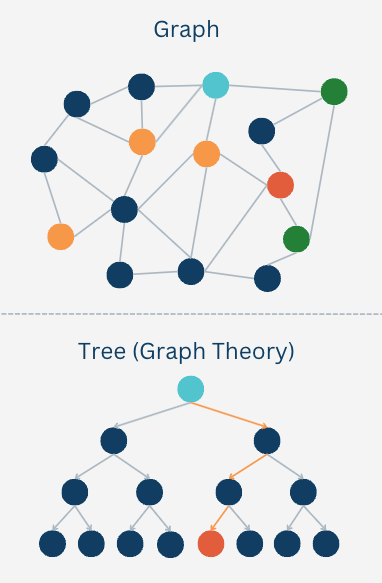
The Project Supertag I shared before is an example of this:
By adding a Live Query inside a Supertag, I created a hierarchy.
The Live Query inside the Project acts as a folder, and “Notes are living inside that folder”.
(With a HUGE difference that Notes can ALSO live in other places.)
Another simpler example:
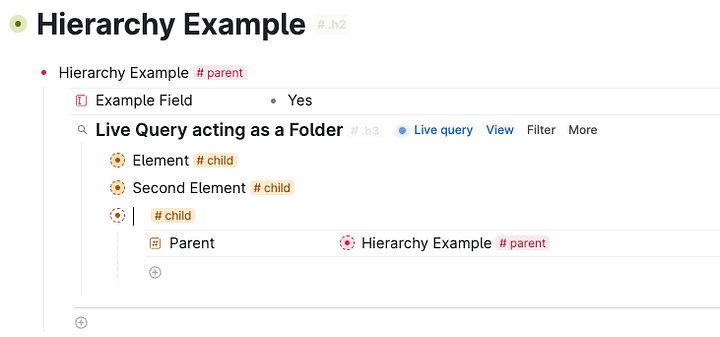
Here, I made a Live Query that brings all #child nodes that belong to the #parent. This is possible by using a field that connects to the #parent Supertag.
See that every node that is created inside the search is auto-initialized with the Parent already defined.
This Live Query can work like a folder. Without the (many) downsides.
Tana allows you to have the benefits of a hierarchy without the rigidity of an actual hierarchy.
🔗 Further Reading:
Link 1: How Tana Works, video by me!
This was my first YouTube video! 😝
Here, I explain the most important mindsets for beginners to understand Tana and start using it effectively.
Hope you enjoy!
Link 2: Levels of PKM, by Tiago Forte

In this short article, Tiago goes through different stages of Knowledge Management.
It’s interesting to see how the 4 processes of knowledge management are spread out across these 4 different levels.
There is a clear progression, where some processes (storing) belong to lower, simpler levels, and others (application) belong to more mature levels of knowledge management.
Thank you for reading!
Fis Fraga, M.Sc. is a Tana Ambassador and digital writer. He helps people develop a productive and fulfilling life using a mix of Knowledge Management and Artificial Intelligence.
You can read more at:

